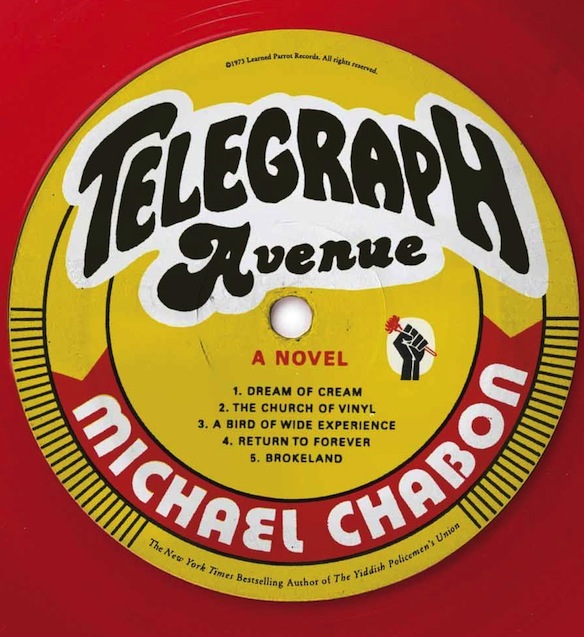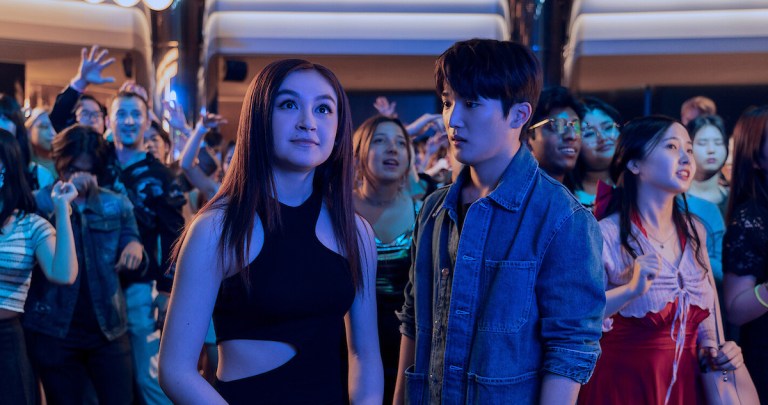Jennifer Egan And Michael Chabon Reveal 16 Truths About Writing
"I'm dull and boring," Chabon said, "So I'm always looking for some way out of the confines of my skull."
By ![]() Rachel Hodin
Rachel Hodin


1. On How They Come Up With The Ideas Behind Their Books
Jennifer Egan said she needs two things: 1) a sense of time and place, even if this is vague, and 2) one or a few very abstract ideas of things that interest her. With her novel Look At Me, she explained the abstract idea as: the wildness of mass media or needing to represent oneself on social media, and how this has changed us. As for the sense of time and place, she was “smitten with the idea of Rockford IL,” interested in its history, and so went there and wallowed. For her, the characters come later one.
Michael Chabon’s process is similar to Egan’s. He starts with “the world of the book, like the milieu,” which he needs to have a strong intuitive connection to, “even if I don’t have the particulars.” For him, writing a book is “an excuse to learn something,” “a pretext to doing research.” He admitted it takes him an excruciatingly long time to write a novel, and yet, “when everything is going horribly wrong” he always has the research to fall back on.
2. On The Difference Between Writing Novels and Writing Screenplays
Both Egan and Chabon have dabbled with screenwriting, as both authors’ works have been considered for TV and/or movie adaptation. Chabon lamented the obligatory outline one must complete and hand in before writing a screenplay, and the fact that he can’t just go to the producers and say, “Don’t worry. I got this.”
3. On The Pain Of Throwing Away Your Work
When writing, Egan says she feels she’s just “writing a part, but it’s suggesting something larger.” “I’m doing more until I can do less,” she adds, “The feeling of concision, seems to me, what fiction is about. Anything I can do to fulfill that feels useful.” Chabon described concision similarly, as a relief.
4. On How To Be A Great Storyteller
Chabon described a great storyteller as someone who “can get him or herself into a corner and then get him or herself out.” However, he added, “I’m not good at that. That’s why I got interested in Houdini.”
Egan described the horrifying moment when you are nearing the end of your novel, and you don’t know what’s going to happen to your characters next. “How can I not know what’s going to happen when it’s coming up so soon? I am their creator, after all!” But then, she explains, it’s this exact feeling of uncertainty that a writer needs to succeed. Because any of the possible paths you might have in mind for your character are too obvious and should not be employed. “That’s not the point of writing blindly,” she said.
5. On Literary Voices
When writing her novel The Keep, Egan explained, she couldn’t shake the sardonic, urban voice from her last novel, Look At Me. But then, “a non-literary voice started talking in my ear, telling me different ways to tell the story.” Apparently this happens to her a lot.
6. Egan On Her New Yorker-Published Tweets and Her Predilection For PowerPoint
Originally Egan had said she wanted to write using the mediums of Twitter and PowerPoint. However, it took waiting to find the voice, or the atmosphere, to approach these mediums. The New Yorker ended up publishing a serialized version of her short story “Black Box” on twitter, 10 nights in a row. And at the end of A Visit From The Goon Squad, she writes in the style of a PowerPoint.
7. On Serialization
“I love 19th century literature in serial form,” Egan said, “But I also love TV. Like The Sopranos.” Egan finds these particular works to be so interesting since most of the action doesn’t really happen until the end, but it remains nonetheless compelling throughout. “And I thought,” she said, “How can I do that now in a way that would make sense?” The answer for her was realized in the serialization of “Black Box” on Twitter.
Chabon explains this type of writing as aspiring to “have people hanging onto your every word,” which he believes is not an easy task in contemporary fiction.
8. On The Importance Of Reading
Chabon encourages being a reader, first and foremost. “I see Jenny [Egan] as a comrade in this,” he added. “The diversity of your books reflects the diversity of your reading. Whereas I, Chabon laments, “was doing the same thing for the longest time.” And so Chabon decided to try and read more, thinking, “That was one way I could make writing more pleasurable for me.”
9. On Genres
Egan proclaimed a love for genres—”They’re inherently fun,” she said. “Gothic is inherently cheesy, that’s what’s fun about it.” When she wrote The Keep (a Gothic style novel), she immersed herself in only gothic literature for three years straight, reading everything from the crazy gothic stuff to Stephen King and Joyce Carol Oates.
10. On Experimental Fiction vs. Conventional Fiction
“It makes no sense,” Egan said. Cervantes, she said, is experimental, but he is also fun. “The novel is such a hungry, greedy form,” she added. And she considers the idea that anything that isn’t realism is “academic” or “experimental” is absurd.
11. On Why They Write Fiction
Chabon said, “Fiction obliges you to be another person. That’s why I do it; to not be me.”
12. On Writing About Music
Egan wrote about music in her 2011 Pulitzer Prize-winning novel A Visit From The Goon Squad, but despite that, she doesn’t consider it to be a huge part of the book. In fact, interestingly enough, Goon Squad was not intended to be a book at all. When she was working on the second chapter—which she thought would be a short story—she found herself at a loss when trying to describe a music executive at work in his office. And “just through researching that one part,” she explains, led her in a completely different direction.

Chabon wrote about music in his most recent novel Telegraph Avenue. “When I was reading Telegraph Avenue,” Egan said, “I thought, ‘He’s really writing about music. I was just pretending to.'” Chabon explained that he loves when people try to describe music through words. He was also drawn to record stores, which he described as “Non-alcoholic taverns of the soul where people hang out and don’t buy anything.”
13. Chabon On What It Was Like Writing A Black Character
When asked if he received any backlash, he said he didn’t. “I was relieved with the reaction. I mean, no one threatened to kill my kids.” He added, “I seem to only be successful at outraging Jews—of course not like Philip Roth—but maybe that’s just easier to do.”
14. On Egan’s Islamic Terrorist Character In Look At Me
What she was aiming for with this character and the book in general was a “noir-ish quality.” To research this character, she worked with various private detectives. As it happened, all of the private detectives she encountered were also writing novels of their own. When she asked them about her character—who could he be, and what could he be doing in New York?—they all suggested that he could be a terrorist. Ironically, the book came out on September 18th, 2011, only days after the 9/11 attacks. In researching and learning how it feels to hate American culture, Egan said she “felt strangely implicated” in the 9/11 attacks.
15. On Writing Autobiographically
Both Chabon and Egan are repelled by the thought of writing autobiographically. “I’m dull and boring,” Chabon said, “So I’m always looking for some way out of the confines of my skull.” When Egan enters the realm of her life or anyone she knows, “A deadness comes over me,” she said. “Wanting to choose things I can’t think of,” she added, “This can’t function in an environment that feels real.”
16. On How It Feels To Finish A Book
“The nature of ending books tells me to leave,” Egan said. Though she does have one fantasy in which she revisits the character Moose from her novel Look At Me.
“When I’m finished with a book, it’s good riddance,” Chabon bluntly announced, “So glad to be done.” Although sometimes, at the very end of the production, when he is sent his last stacks of proofs, he gets a little lethargic. “I’ll stop and say, ‘Oh my god, this is it. I won’t see these people again,’ and I get wistful. Although I’m more wistful about my life while writing the book than I am about the actual characters.” ![]()




